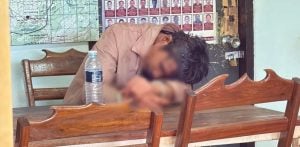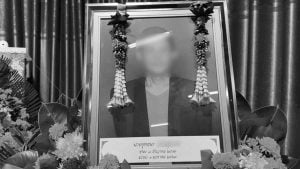Using talcum powder increases risk for ovarian cancer by 234%

In recent years, the use of talcum powder, especially in the genital area, has come under intense scrutiny due to its potential link to ovarian cancer. A comprehensive study published in the Journal of Clinical Oncology on May 15 highlights this alarming connection, shedding light on the risks associated with intimate care products.
Talcum powder and cancer: Understanding the link
Talcum powder, a product derived from the mineral talc, is widely used for its moisture-absorbing properties. It’s a staple in many households, commonly found in baby powders and adult body powders. However, its safety has been questioned, particularly concerning its link to ovarian cancer.
The study’s findings
Dr Katie M. O’Brien and her colleagues from the U.S. National Institutes of Health conducted an extensive study involving 50,884 women who had a sister with breast cancer. The study aimed to explore the association between the use of intimate care products, such as genital talc and douching, and the incidence of hormone-related cancers.
The researchers collected data on the participants’ use of genital talc and douching between 2003 and 2009, with follow-up data gathered from 2017 to 2019. They found that a significant portion of the participants – 41% to 64% – reported douching, while 35% to 56% used genital talc.
Their findings revealed a positive association between genital talc use and ovarian cancer. The hazard ratios, which measure the risk of cancer among those who used talc compared to those who did not, ranged from 1.17 to 3.34. This means that the risk of ovarian cancer increased by 17% to 234%for women who used talcum powder.

Interestingly, the study also identified that frequent douching and douching during young adulthood were linked to an increased risk of ovarian cancer. However, neither douching nor talc use was associated with breast or uterine cancer.
The science behind talcum powder and ovarian cancer
The possible link between talcum powder and ovarian cancer has been a topic of research and debate for decades. Talc is composed mainly of magnesium, silicon, and oxygen. When used as a powder, it effectively absorbs moisture and reduces friction, making it useful for keeping skin dry and preventing rashes.
Concerns about talcum powder and cancer primarily focus on two scenarios:
- Long-term exposure to talc particles in the workplace, such as among talc miners, potentially increasing the risk of lung cancer.
- Regular application of talcum powder to the genital area potentially increases the risk of ovarian cancer.
Talc naturally contains asbestos, a known carcinogen, but since 1976, the Cosmetic, Toiletry, and Fragrance Association (CTFA) has set guidelines to ensure that talc used in cosmetics is asbestos-free. Despite these guidelines, the potential for asbestos contamination remains a concern.
Laboratory and human studies
Researchers use two main types of studies to investigate whether a substance causes cancer: lab studies and studies in people.

Lab studies: These involve exposing animals to a substance in large doses to observe if it causes tumours or other health issues. While these studies are valuable, their applicability to humans can be limited.
Studies in people: These studies compare cancer risks among groups exposed to a substance versus those not exposed. They provide direct insights into human health but can be influenced by various external factors.
Lab studies have produced mixed results regarding asbestos-free talc, with some showing tumour formation in animals and others not. Human studies have suggested that talcum powder could cause ovarian cancer if powder particles applied to the genital area travel through the reproductive system to the ovaries.
Implications and future research
The study by Dr O’Brien and her team supports the hypothesis that there is a significant association between genital talc use and ovarian cancer. While the exact cause or mechanism remains unidentified, the evidence is strong enough to warrant concern and further investigation.
The research also highlights the importance of considering potential biases, such as differential reporting of talc use among cancer cases and non-cases. Even when correcting for these biases, the hazard ratios remained above 1.0, reinforcing the link between talc use and ovarian cancer.
While talcum powder has long been trusted for its moisture-absorbing and friction-reducing properties, growing evidence suggests a troubling connection to ovarian cancer. Women who use talc-based products, especially in the genital area, should be aware of these risks and consider alternative options for intimate care. Ongoing research is crucial to fully understand the mechanisms behind this association and to ensure the safety of consumer products. As our knowledge evolves, so too should our approach to health and personal care, prioritizing safety above all else.
Latest Thailand News
Follow The Thaiger on Google News:


























